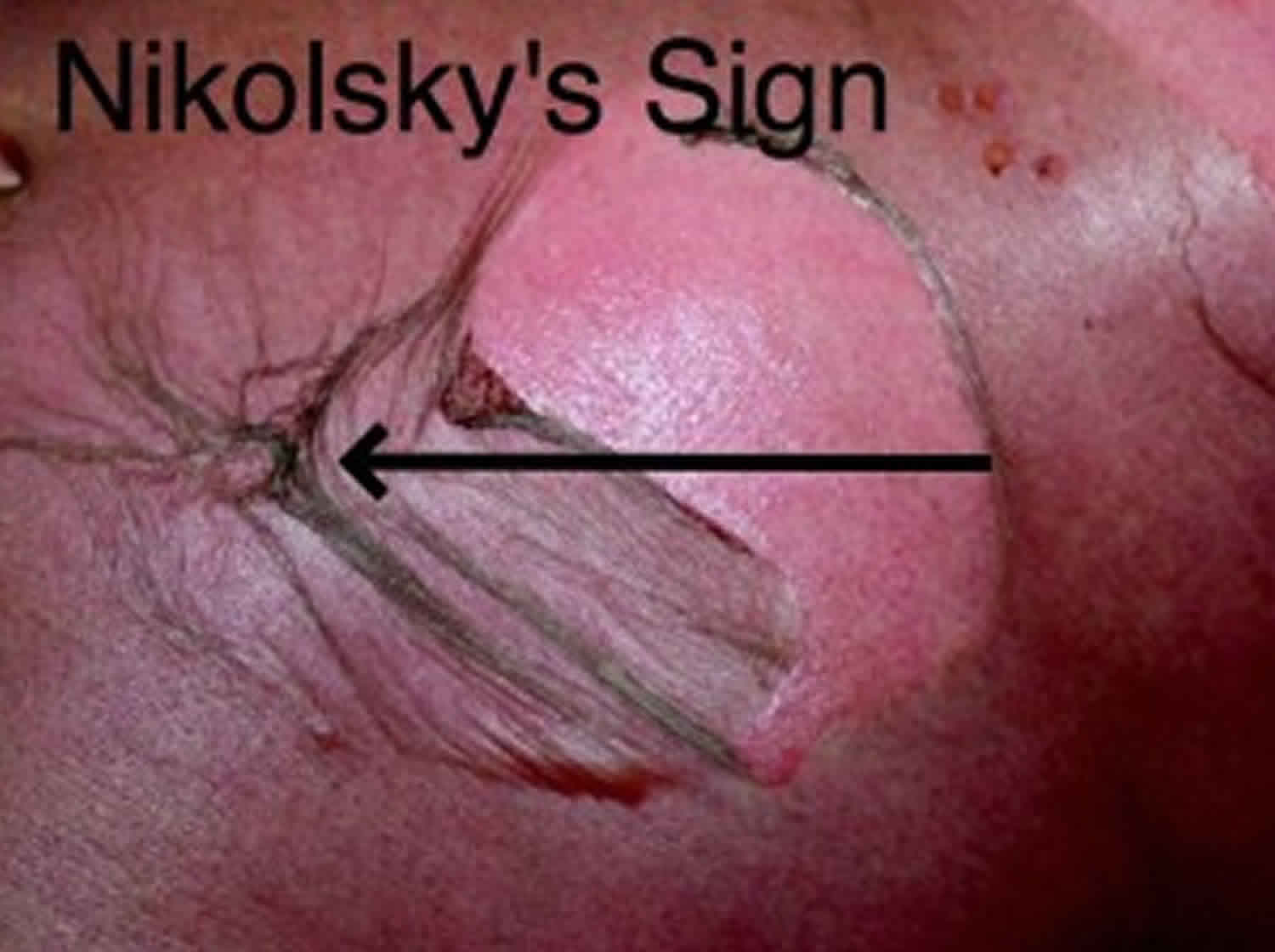Nikolsky sign
Nikolsky sign is a skin finding in which the top layers of the skin slip away from the lower layers when rubbed, forming a blister within minutes 1. Nikolsky sign indicates intra epidermal cleavage and can also be elicited on the mucosal surface. When Nikolsky sign is elicited in the normal looking skin in the vicinity of the blister it is called marginal Nikolsky sign and if it is elicited away from the blister it is called direct Nikolsky sign 1. Nikolsky sign also predicts the activity of the disease while on therapy 2.
Nikolsky’s sign is useful in differentiating pemphigus vulgaris (where it is present) from bullous pemphigoid (where it is absent) 1. Also present in Scalded Skin Syndrome caused by the exfoliative toxin of Staphylococcus aureus 3, 4.
Pseudo Nikolsky sign or epidermal peeling sign is positive in Stevens-Johnson syndrome, toxic epidermal necrolysis, in some cases of burns and bullous ichthyosiform erythroderma 1. Although the method and mechanism of elicitation of the sign are the same as for Nikolsky sign, this could be elicited only in the involved erythematous areas, since the underlying pathology in these diseases is necrosis of the cells in contrast to acantholysis in pemphigus group 2.
The conditions associated with Nikolsky sign can be serious. Some people need to be admitted to the hospital. You will be asked about your medical history and given a physical examination. You may be given fluid and antibiotics through a vein (intravenously).
See your doctor if you or your child develops painful loosening, redness, and blistering of the skin, which you do not know the cause of (for example, a skin burn).
Nikolsky sign causes
The Nikolsky sign can be often found in people with:
- Autoimmune blistering conditions such as pemphigus vulgaris
- Bacterial infections such as scalded skin syndrome
- Drug reactions such as erythema multiforme.
Nikolsky sign treatment
Nikolsky sign treatment will depend on the underlying cause of the Nikolsky sign.
References- Ganapati S. Eponymous dermatological signs in bullous dermatoses. Indian J Dermatol. 2014;59(1):21–23. doi:10.4103/0019-5154.123483 https://www.ncbi.nlm.nih.gov/pmc/articles/PMC3884922
- Sachdev D. Sign of Nikolsky and related signs. Indian J Dermatol Venereol Leprol. 2003;69:243–4.
- Moss C, Gupta E. The Nikolsky sign in staphylococcal scalded skin syndrome. Arch Dis Child. 1998;79:290.
- Jarrett B, Ghazala S, Chao J, Chaudhary S. Case of Steven-Johnson Syndrome in a male with breast cancer secondary to docetaxel/cyclophosphamide therapy. BMJ Case Rep. 2016;2016:bcr2016217255. Published 2016 Nov 15. doi:10.1136/bcr-2016-217255 https://www.ncbi.nlm.nih.gov/pmc/articles/PMC5129142





